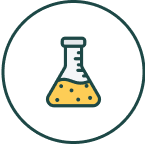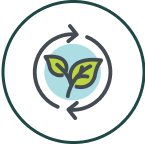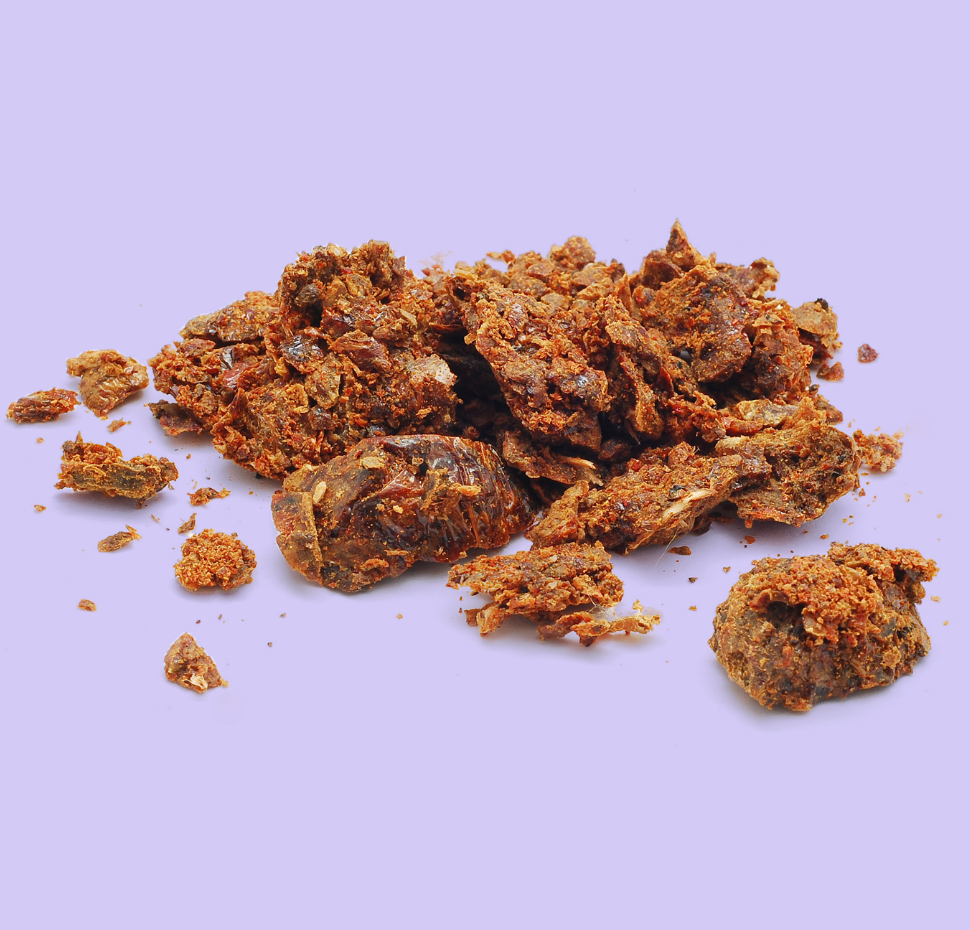We make bee products the natural choice for your health while helping to protect bees and our environment.
 Tested in the laboratory
Tested in the laboratory Pure ingredients
Pure ingredients Sustainable Beekeeping
Sustainable Beekeeping Made in San Marino & Spain
Made in San Marino & Spain

Propolis, also known as bee glue, is a natural substance produced by bees to protect the hive from disease. Scientists have identified more than 300 chemical compounds in the substance. For example, propolis also contains flavonoids, which have an antioxidant effect. Propolis is often referred to as the most powerful natural antibiotic due to its antibacterial, anti-inflammatory and vitalizing properties.
Everything you need to know about the fascinating protective resin of bees.
"A natural antibiotic from the world of bees!", "The insider tip in the fight against germs!" - such headlines about propolis definitely arouse interest. But they also raise questions among critically thinking consumers: Is there really something behind the supposed miracle cure from the beehive? The fact is that propolis makes the environment in the beehive less germ-free. Many people also report positive effects on their well-being and a preventative effect against various ailments. But what is really behind it? What exactly is propolis, where does it come from and how do bees use it? In the next sections, we will look at the origins and role of propolis in the beehive, what science says about it and how people use propolis for their purposes. Take a few minutes and you will learn everything you need to know about propolis.
Propolis: The Pharmacy of the Bees
Propolis is a natural, resinous substance that is yellowish-brown in color and has a characteristic, bitter-smelling aroma. This substance, produced by bees, serves as an effective protective mechanism in the hive against pathogens and intruders. In environments where there is heat and humidity, infections spread quickly. Just as people are susceptible to athlete's foot in a damp swimming pool, bees also live in an environment that is ideal for microbes. A hive where up to 40,000 bees live together at 35 degrees Celsius and a humidity of 60 percent would actually be a perfect breeding ground for germs. Nevertheless, the interior of a hive is surprisingly free of bacteria, viruses, fungi or parasites, and the bees themselves are largely unaffected by pathogens. How is this possible? Bees have natural strategies to protect themselves and their home from microorganisms, one of which is the use of propolis. This natural disinfectant is produced by the bees by collecting resin from trees and enriching it with their own enzymes and other organic substances from the hive. This mixture has strong antimicrobial properties. Propolis is used strategically in the hive: It seals cracks, gaps and openings where germs could otherwise easily settle. Even the honeycomb cells are lined with a thin layer of propolis to protect them from harmful microorganisms. If intruders such as slowworms or mice find their way into the hive and are overwhelmed by the bees, their bodies are covered with propolis because the bees cannot simply remove them. In addition, bees minimize the risk of introducing germs by designing the entrance hole: It is lined with propolis and partially narrowed so that every returning bee has to go through a natural disinfection lock. This clever use of propolis explains why the germ load in the hive is so low.
Propolis for humans:
People have been using the extraordinary properties of propolis for thousands of years. The ancient Egyptians, for example, used it to embalm their deceased, while in ancient times it was valued by doctors for its healing powers for various ailments. Today, with a growing interest in natural and sustainable products, propolis is enjoying great popularity, either as a dietary supplement or as an ingredient in cosmetic products.
What does propolis look like and what does it taste like?
Unlike other bee products, which are often associated with the color yellow, propolis comes in a wide range of colors. It can vary from yellowish tones to shades of red and brown, and even green, violet or black are possible. This variety reflects the different plant sources from which the bees collect the resin. Anyone who compares the taste of propolis to the sweet aroma of honey might be surprised. Propolis has a distinctive, bitter-spicy taste, which is due to the high resin content. In its pure form, propolis can appear very diverse on the outside - from small, yellowish, round lumps reminiscent of mustard seeds to larger, brown and angular pieces reminiscent of rock candy.
Long tradition
Propolis has a long tradition in human medicine. The use of propolis goes back thousands of years. The ancient Egyptians valued it for its preservative properties in mummification. In ancient times, doctors recognized its healing powers and used it to treat wounds and prevent disease. Over the centuries, knowledge of the diverse health benefits of propolis has been preserved and developed, making it a timeless remedy in traditional and modern medicine.
Propolis in various forms
Propolis is available in various forms to meet different needs and application preferences. For internal use, tinctures and extracts are available, which can be consumed either pure or diluted, as well as capsules and tablets, which allow for easy and precise dosing. For external use, propolis is available in the form of ointments and creams, which are ideal for skin care, especially for skin irritations and to support skin regeneration. This variety of dosage forms makes propolis a flexible and valuable companion for natural health care and general well-being.
Swiss propolis is rare
Unfortunately, propolis is still far too unknown in Switzerland. Our mission is to change that by making bee products more widely known and a natural choice for everyday health! The honey produced in Switzerland by local beekeepers only covers about a third of total consumption and is mainly sold directly. It is therefore hardly surprising that it is difficult to harvest large quantities of propolis, which has its origins in Switzerland, because only a few beekeepers concentrate on this specialty, and if they do, then usually only on a small scale. Swiss propolis lovers are therefore often supplied from European countries with a rich beekeeping tradition, especially from the Balkan region, as well as from South America and Asia.
Propolis for children?
It is generally known that babies should not be given honey until they are 12 months old. The reason is that honey can contain bacteria that babies cannot yet process. This is because their stomach acid and intestinal flora are not yet fully developed. This can lead to a dangerous disease called infant botulism, which can be life-threatening. It is not the bacteria themselves that is the problem, but a poison they produce. The danger of infant botulism only exists for babies up to one year old, which is why honey is completely taboo. Other bee products, such as pollen, royal jelly or propolis, are usually not mentioned. However, since honey can be hidden in all bee products, no other bee products should be given until the child is at least one year old. After the first year of life, the risk no longer exists because the intestinal flora is fully developed.
Use of Propolis in Children
The use of propolis is not recommended for babies under one year of age. Before using propolis, it is crucial to rule out a possible allergy to bee products. There are two ways to determine an allergy: either a dermatologist performs an allergy test, or a very small amount of propolis is applied to the child's skin to observe a reaction. If the treated area shows redness, swelling or itching, the propolis must be removed immediately and should not be used any further. If, however, there are no reactions, the use of propolis can be started carefully. Our Propolis Immune Spray is water-based and suitable for small children. However, it is important to note that the spray should only be used under supervision to ensure that the correct dosage is guaranteed for our younger users.








































